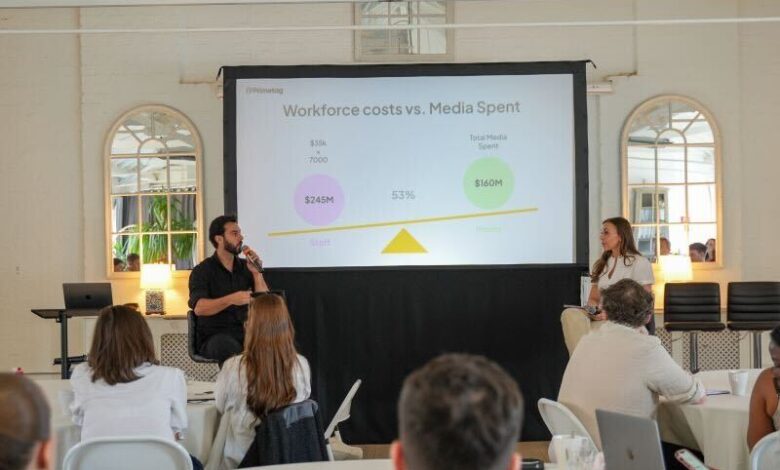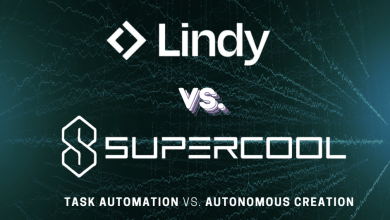
Artificial Intelligence is rapidly transforming from an experimental technology to an essential component of effective marketing strategies. With global investment in AI expected to reach $200 billion by 2025 and 76% of marketers now incorporating some form of AI into their influencer campaigns, we’ve reached a point in the evolution of brand-creator partnerships.
Driving omnichannel performance through intelligent automation
The traditional divide between online influence and in-store conversion is dissolving, thanks largely to AI’s ability to track and optimise the customer journey across multiple touchpoints. AI-powered influencer campaigns deliver significantly higher return on investment compared to traditional approaches, with the most significant gains seen in integrated omnichannel strategies. This performance improvement stems from AI’s unique capability to identify patterns in consumer behaviour that human analysts might miss and to make real-time adjustments to campaign parameters.
A branch of AI, Natural Language Processing (NLP) technology, has been particularly transformative for brands, allowing marketers to analyse content and conversations at scale with unprecedented depth. These sophisticated systems can now evaluate messaging tone, brand alignment, and audience sentiment across thousands of creator posts simultaneously, providing quantitative assessments of qualitative factors that previously required extensive manual review.
Beyond measurement, AI is enabling more sophisticated audience targeting that bridges online engagement with offline behaviour. Predictive algorithms can now identify which creators are most likely to drive foot traffic to physical locations based on audience affinity data and historical performance patterns. This capability has proven especially valuable for retail and hospitality sectors looking to translate digital influence into tangible, real-world actions.
As AI reshapes how brands measure and optimise influencer performance across channels, it’s simultaneously transforming who, or what, can become an influential voice in the digital space.
The rise of synthetic influencers and hybrid realities
Perhaps the most fascinating development in AI-powered influence is the emergence of entirely synthetic creators. These computer-generated personalities have begun accumulating millions of followers, with the market for virtual influencers projected to reach $154.6 billion by 2032. Brands are increasingly partnering with these digital avatars, attracted by their perfect consistency, 24/7 availability, and freedom from the unpredictability that sometimes comes with human influencers.
Meanwhile, AI is enabling human influencers to scale their output through partially automated content creation. Technologies that can generate draft scripts, suggest optimal posting times, or even create background elements allow creators to maintain authentic connections while significantly increasing their productivity. Creators utilising AI assistance tools can substantially boost content output while maintaining engagement quality, effectively balancing the human touch audiences crave with AI’s efficiency.
The boundary between human and synthetic influence continues to blur as deepfake technology and realistic CGI become more accessible. A recent study indicates that only 50% of consumers can reliably detect AI-generated content. This convergence raises both opportunities and challenges for brands seeking to navigate this new landscape authentically, necessitating clear strategies for disclosure and transparency.
However, acceptance of virtual personalities varies significantly across generations. Gen Z and Gen Alpha demonstrate greater comfort with digital-first relationships than Millennials, who still prioritise traditional human connections. This generational shift in trust paradigms means younger audiences are increasingly open to engaging with synthetic influencers as authentic voices in their decision-making process. While these technological advancements offer exciting new possibilities for brands, they also introduce complex ethical considerations that must be carefully navigated.
Fixing Influencer Programmes’ Faults
Perhaps the most consequential influence AI has on the influencer industry is acting as a salve for the industry’s long-standing scalability challenge. In the past, growing an influencer programme meant expanding your team in lockstep with your budget; every additional pound allocated demanded another pair of hands to handle content cataloguing, trend spotting, performance reporting, and approval workflows.
AI changes that dynamic by sifting through millions of posts in mere seconds, analysing content styles, publishing schedules, caption lengths, and audience engagement. Crucially, it also elevates measurement capabilities: sentiment-analysis engines gauge emotional impact and monitor shifts in brand perception, giving companies a deeper, more textured view of campaign success beyond traditional vanity metrics. All without the need for additional headcount.
Navigating ethical considerations in AI-powered influence
With these advancements come significant ethical challenges that brands must address carefully. Algorithm bias remains the most pressing concern, as AI-powered influencer discovery platforms often reflect existing inequalities when identifying and recommending creators. Responsible brands are implementing regular oversight mechanisms and diverse training datasets to ensure fair representation across their influencer programs. Privacy concerns present another critical consideration, particularly as AI enables increasingly detailed analysis of consumer responses to influencer content.
Transparency has emerged as the non-negotiable foundation of trust in AI-enhanced influencer programs. Consumer research indicates that the vast majority of audiences expect clear disclosure when interacting with synthetic content or when their data is being used to personalise influencer experiences. Brands that proactively communicate their AI usage see higher trust scores compared to those taking a more opaque approach. The regulatory landscape is also evolving rapidly, with the EU’s AI Act and similar frameworks in development worldwide establishing new compliance requirements for AI-powered marketing initiatives.
Brands that establish clear AI governance frameworks, including regular algorithmic audits and bias assessments, are better positioned to build lasting trust with increasingly tech-savvy audiences while avoiding potential regulatory pitfalls. Beyond ethical governance, AI is fundamentally changing how brands approach risk management and audience targeting in their influencer strategies.
Enhancing brand safety through predictive intelligence
AI has revolutionised brand safety within influencer partnerships by shifting from reactive to predictive approaches. Advanced natural language processing and image recognition technologies can now analyse an influencer’s entire digital footprint with remarkable accuracy in identifying potential compatibility issues before partnerships begin. These systems continue monitoring throughout campaigns, alerting brands to emerging risks or opportunities for deeper engagement. Brands utilising AI-powered vetting systems experience significantly fewer brand safety incidents compared to those relying on manual review processes.
The technology can also predict how specific content might be received by different audience segments, helping brands avoid unintentional controversy while maximising positive impact. AI sentiment analysis can now forecast audience reactions across different demographic and psychographic segments with remarkable precision, allowing for a more nuanced content strategy development. This capability is particularly valuable when navigating culturally sensitive topics or entering new markets, with early adopters reporting substantial reductions in negative sentiment incidents after implementing predictive AI tools.
The next 12 months: Integration, Personalisation, and Measurement
Looking ahead, we can expect to see deeper integration of AI across the entire influencer marketing lifecycle. Creator discovery platforms will increasingly incorporate predictive matching based on brand values and campaign objectives as the technology continues to mature and deliver measurable results. Content generation tools will enable hyper-personalisation at scale, allowing influencers to tailor their messaging to specific audience segments without losing authenticity.
Measurement frameworks will evolve to provide increasingly sophisticated attribution models that connect influencer activity to business outcomes. Multi-touch attribution powered by AI is expected to become the industry standard, replacing last-click models with a more nuanced understanding of the influencer’s role throughout the customer journey. This evolution will fundamentally transform how brands value and compensate creator partnerships.
The most successful brands will be those that view AI not as a replacement for human creativity but as an enabler of more meaningful connections. One of the key challenges AI is uniquely positioned to solve is scalability, particularly when compared to other digital channels where influencer marketing has traditionally lagged behind. By embracing technological advancements, addressing ethical considerations proactively, and investing in sophisticated measurement frameworks, marketers can navigate the changing landscape while building authentic connections with their target audiences.



